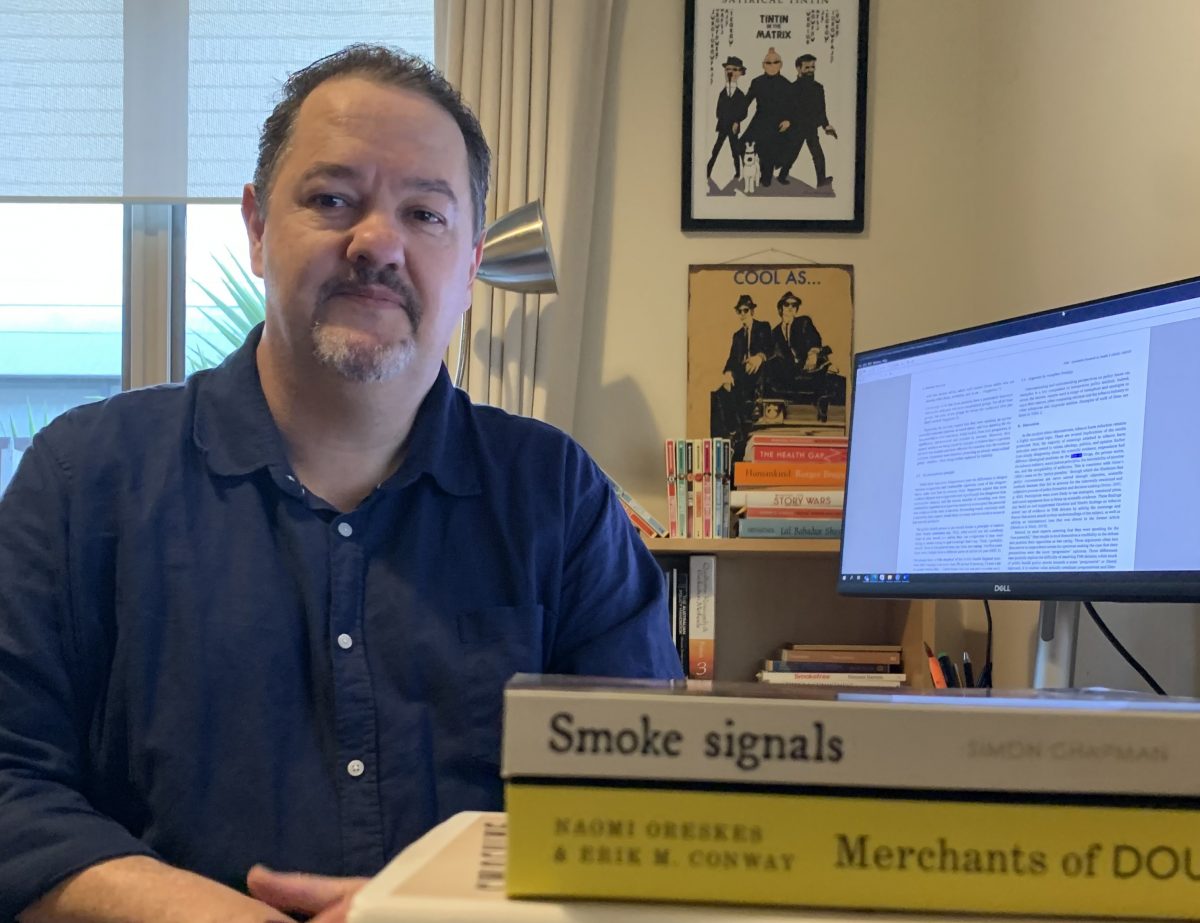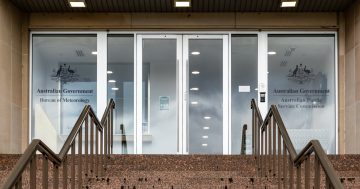
Australian National University researcher Andrew Perusco asks why Australia is struggling to phase out smoking. Photo: Supplied.
Not so long ago Australia was seen internationally as somewhat of a leader in tackling the scourge of tobacco, but today it’s a laggard, says ANU researcher Andrew Perusco.
Mr Perusco, a PhD candidate and Sir Roland Wilson scholar, is delving into why there appears to be no tobacco endgame strategy in Australia.
The Sir Roland Wilson Foundation aims to build capability in the public service by fostering groundbreaking research, policy boldness and leadership building.
Mr Perusco has taken time off as a policy specialist in the federal Department of Health and Aged Care to complete his doctorate, and stresses that while the department is supporting his studies, the conclusions he makes from his research are his own.
And his findings so far are that Australia is being left behind in the fight against tobacco, all to the delight of the industry.
“The main question is why isn’t Australia further down the line with a tobacco endgame strategy?” he says.
“We did some great things with plain packaging and tax excise a decade or more ago, but we’ve taken our foot off the accelerator. We are slipping back.
“Australia is 12th in the OECD in terms of smoking prevalence. We are not leaders in combating smoking by any stretch of the imagination.”
In the 1990s, Michael Wooldridge, Coalition health minister in the Howard government, went hard in launching a national mass media campaign warning about the health hazards of smoking – including advertisements showing grotesque images of clogged arteries and damaged lungs.
More than 10 years after that, Australia was the first country to introduce plain packaging rules for tobacco products. That fight began under the Rudd and Gillard Labor governments, against strenuous opposition from the tobacco industry, and laws were finally introduced in 2012.
“We definitely saw the industry power at play around plain packaging. It lobbied hard to oppose that,” Mr Perusco says.
“But we also saw political will at play and Nicola Roxon [as health minister and later as attorney-general] in the Labor government was dogged in making sure it happened.
“Australia seems to have lost some political will over smoking since then.”
Mr Perusco’s research has shown him that efforts to phase out smoking are often viewed positively by the public. But it’s the influence of the industry where things get difficult.
“Surveys show the general public, including people who smoke, agree that the commercial sale of tobacco products should be phased out. Most smokers wished they had never started. But the power of the industry is an important factor in this.
“Big tobacco actively influences public perceptions by using various marketing tools to frame their products in a good light – to the detriment of public health.
“The global tobacco market is valued at US$267 billion, all the while it is killing more than 8.2 million people in the world each year – 20,000 of them in Australia.”
Mr Perusco says the industry continues to thrive, despite being well aware of the harmful effects of their product.
“Big tobacco has internal research that ‘environment’ is just as important as ‘nicotine’ is when it comes to addiction. This flies in the face of industry messaging that smoking is a matter of individual choice.”
Around the world, many nations and jurisdictions are doing much more than Australia is when it comes to tobacco policies.
Mr Perusco points to various European countries, the US state of California – and particularly Australia’s near neighbour New Zealand, which has a target of a daily smoking rate of less than 5 per cent by 2025.
“New Zealand is currently leading the world with its tobacco endgame strategy. They have a smoke-free 2025 action plan,” he says.
“They are banning the sale of tobacco to people born after 2008, they are making cigarettes meet a lower nicotine content standard, and they are reducing by 90 per cent the number of outlets across New Zealand where cigarettes can be bought.
“Yet in Australia, most tobacco control programs and policies have focussed on demand reduction. But this focus on demand, rather than on supply reduction, only serves to benefit the tobacco industry.
“The fact that the focus is on demand rather than supply only goes to prove how influential the industry is.
“If we are to end the tobacco epidemic, we must move to viewing the tobacco industry’s products as illegitimate.”













